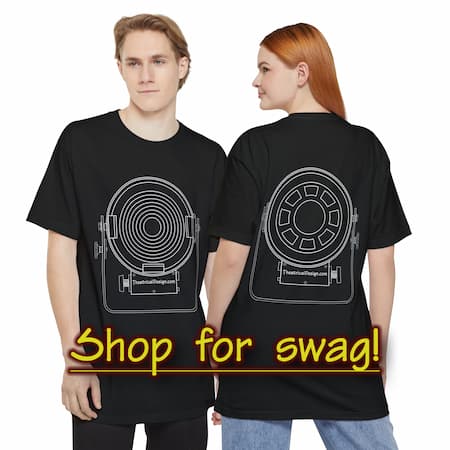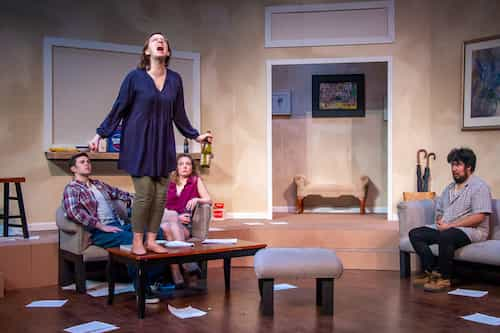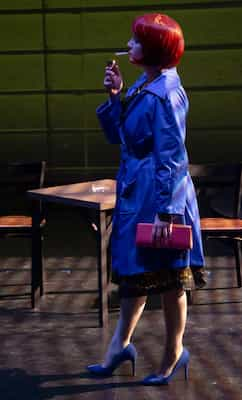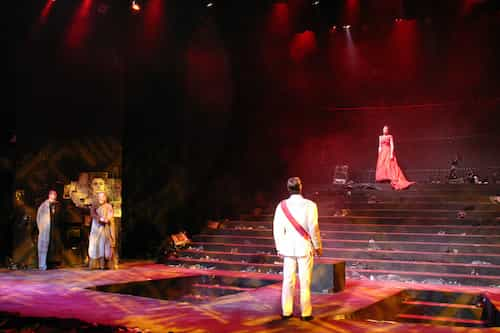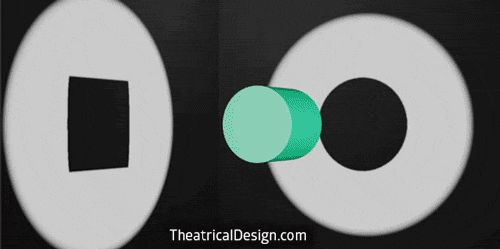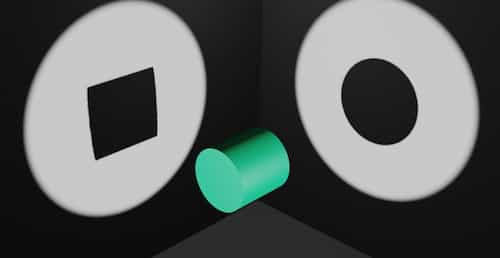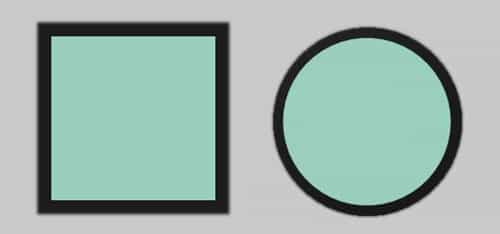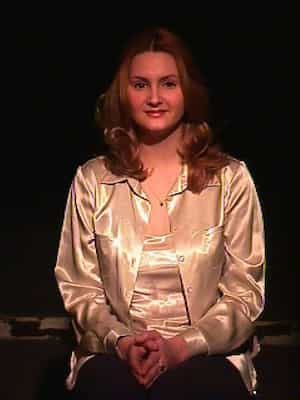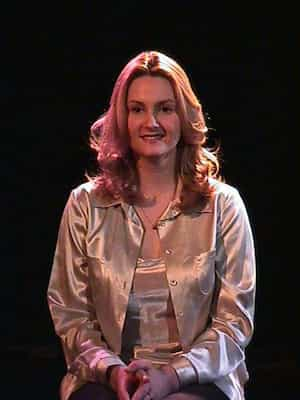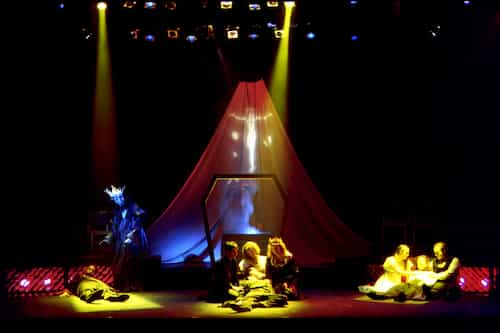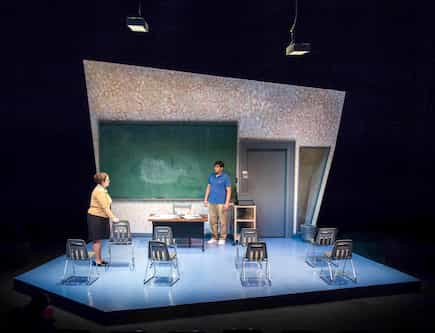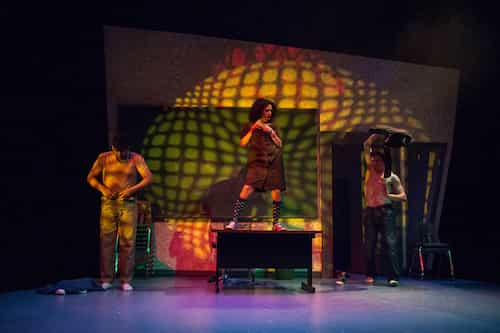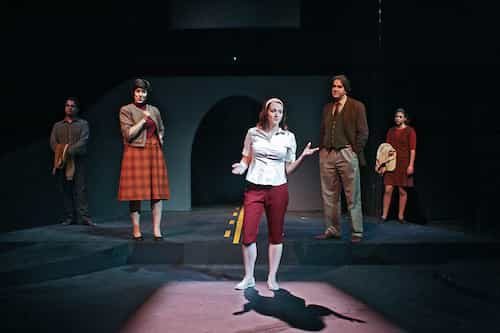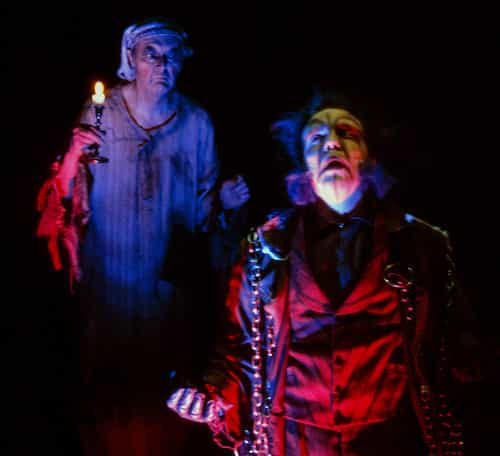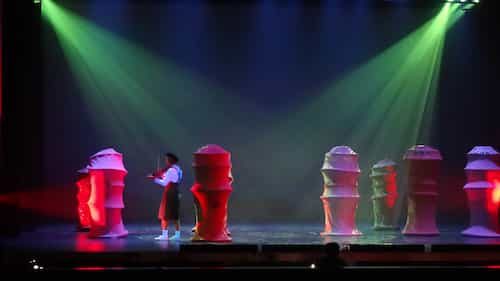Functions & Qualities of Lighitng Design
Func-tion \'fen(k)-shen\ noun the action for which a person or thing is specially fitted or used of for which a thing exists.
Qual-ity \'kwal-et-e\ noun peculiar and essential character: an inherent feature.
| On this page: | |
The functions of light and the properties that affect them.
There is an old adage that states that lighting designers should “light the play, not just the stage.” Considering the functions of the lighting designer for each specific production can help you focus down on your objectives; what does the lighting want to accomplish?
The functions of stage lighting are the objectives or purposes for which the designer influences and controls the qualities of light we are about to investigate.
Stanley McCandless (1897-1967, considered the “father of modern lighting design”) assigned four functions for stage lighting: visibility, naturalism, composition, and mood. Modern writers typically substitute modeling or form revelation for naturalism. I also like to add establishing given circumstances this mix.
Lighting designers are often employed to work on dances, corporate theater (award shows, product roll-outs like Apple iPhones), and nontraditional works… So let’s modify that old adage to reflect more of what we do; “light the production, not just the stage.”Visibility
The ability for the audience to see the performer, or product, is under the control of the lighting designer. To show the performer in different ways is the primary responsibility of the lighting designer.The single, most important function of stage lighting is to supply visibility – enough light to see the actors and setting.At times, the audience cannot see the performers well or may not be able to hear them because the audience cannot see the actors' mouths move. This reason partly explains why some people speak more loudly into phones than during regular face-to-face conversations.
Focus & Composition
Selective focus, directing the audience’s attention, is another key function of the lighting designer. We are often called upon to ensure the audience is paying attention to one actor or area.
You may want to direct the audience’s attention away from a set change, to highlight a particular actor, or to make sure the audience sees a particular action.
It is often said that the most powerful acting is reacting. It can be stronger to help focus the attention of the audience away from the character who is speaking (or doing) and onto the character who is learning (or seeing) the new information or action.
If a character pulls a knife out of a drawer and hides it behind his back for the rest of the scene, no tension will be created if the audience doesn't see the character take the knife.
The overall visual design is called composition. None of the other visual elements works without light. They will not be seen. While the lighting designer does not have absolute control over all the compositional elements on stage, both light and shadow add visual interest and texture as well as focus to the overall picture.
Plasticity
Plasticity, or modeling, shows the 3-dimensional nature of an object or person. A set with true brick texture will not be understood without the proper lighting to emphasize the shape of the set.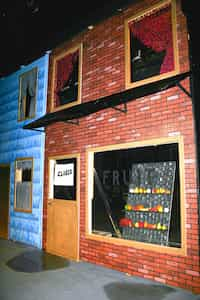
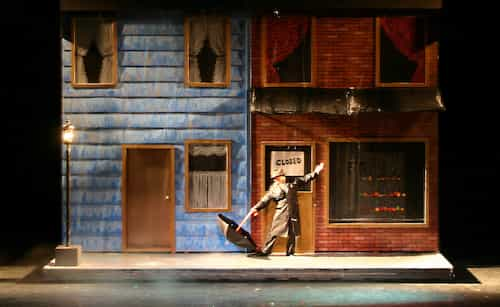
Mood
Sometimes the most important feature of lighting is how it can affect the mood of the play. Who else but the lighting designer can make the pub appear smoky, the living room, romantic, or the office, sterile.Given Circumstances
Circumstances include considerations such as time of day, season, location, suggested lighting sources, and historical period. Although scenic and/or costume design has the tools to more specifically establish the reality of a setting, light can greatly add credibility to the stage illusion.
The functions of light represent the goals the designer hopes to achieve with light. All the functions are related, and whatever you do with the lighting will reflect your choices among these functions. In addition to these functions of light, there are also four qualities of light which can be controlled to also achieve your goal.
Distribution
Distribution includes how even the light is across the stage and the type of light seen.Is it smooth or textured?
Does the light fade off or are there shutter cuts? Distribution may help focus the attention of the audience to a particular area or may reinforce the set by showing the lighting change between different areas on stage.
Intensity
Intensity is the relative brightness onstage. If a scene should appear to be lit by candle-light, a theatrical lighting designer usually cannot use just one candle as the light source – it would not be bright enough for an audience an average of 20 feet away to see the performer.If the actors are describing a bright, sunny day in the middle of June in a field, it would look odd if the lighting did not reinforce this idea.
Movement
There are three types of movement the lighting designer may manipulate for a production.I will always remember watching a production of “Red Noses” in graduate school. I was master electrician, and, at one point, nearly a dozen actors walked across the stage, illuminating their own way holding lanterns I had rigged up. It was a beautifully theatrical moment.
Of importance is whether the change is a “bump” (zero time), fast, or slow. Is the sunset fast and unnatural, or does the light on stage slowly fade?

